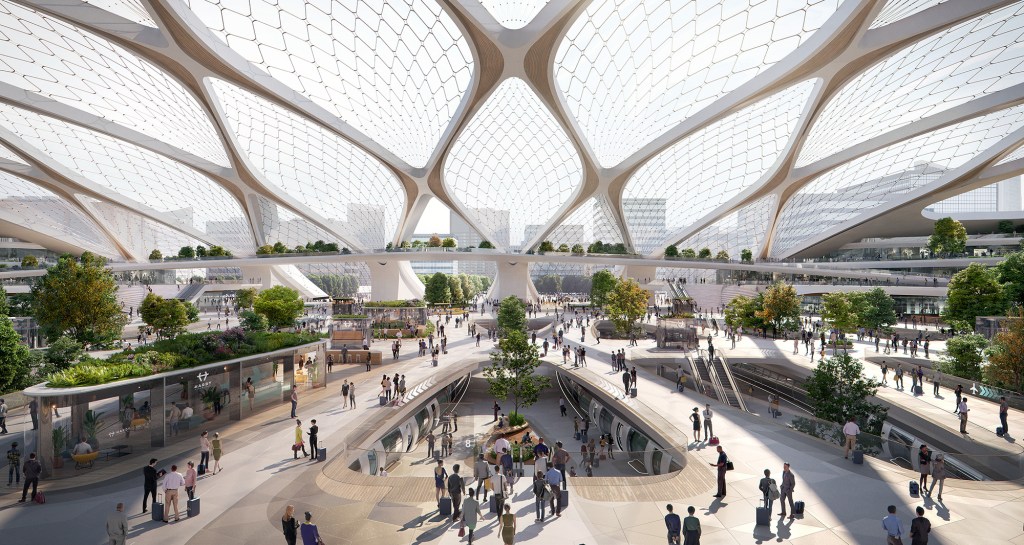The promises of Hyperloop systems are seemingly limitless: Record-fast transportation, increased globalization, and environmentally friendly transit, just to name a few. As more cities around the globe embrace the technology as a next-generation necessity for a 21st century metropolis, architecture firms are following suit. On Wednesday, Amsterdam-based architectural practice UNStudio unveiled a proposal for modular, sustainable Hyperloop hubs at the first-ever HyperSummit held in Utrecht, Netherlands, hosted by Dutch transit company Hardt Hyperloop.
“The Hyperloop is not only a realistic and viable alternative to flying, it is going to revolutionize travel,” said UNStudio founder and principal Ben van Berkel, Hon. FAIA, in a press release. “It will provide extremely fast travel times with direct connections between cities, enabling completely new ways of working and spending our leisure time, which in turn will lead to a multitude of economic, environmental, and knowledge exchange benefits.”
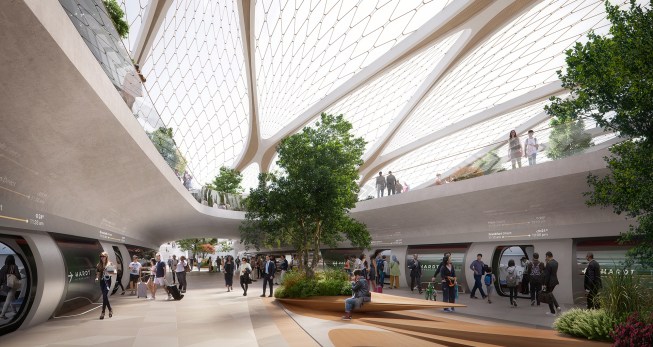
Courtesy UNStudio
Pedestrians explore the upper level of a Hyperloop hub while commuters enter and exit trains.
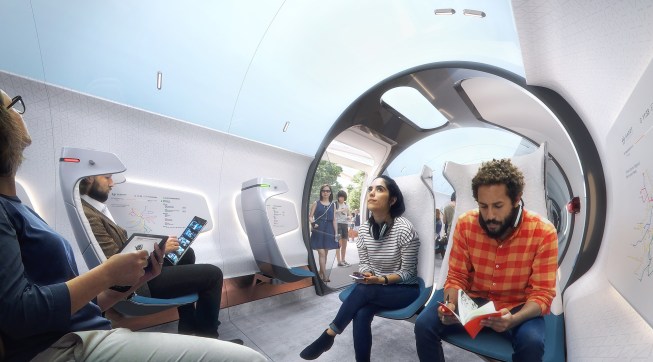
Courtesy UNStudio
Designed to blend into the surrounding architecture and typography, the hubs will accommodate both super-high-speed networks and regional transportation, and could feature amenities such as luggage checks, bike docks, daycare facilities, or indoor parks.
“The modular system … allows us to integrate above and underground, growing modules up to meet a dense inner city neighborhood, or down to blend with a more low-rise setting,” the team explains in the same release. Though many key components will be standard, the systems would be customizable and scalable for various settings including in city centers, adjoining or replacing existing infrastructure, or nearby airports.
UNStudio proposes powering the “stations of the future” with solar-generated electricity to limit pollutant emissions and the environmental impact of the hubs. As such, the structures could one day become a “battery” for the surrounding infrastructure to “bring about a shift away from dependency on centralized power plants,” according to the firm.
In the immediate future, Hardt Hyperloop will complete a feasibility study of a potential Hyperloop route between Amsterdam and Frankfurt, Germany, which would reduce the trip from four hours to just 53 minutes.
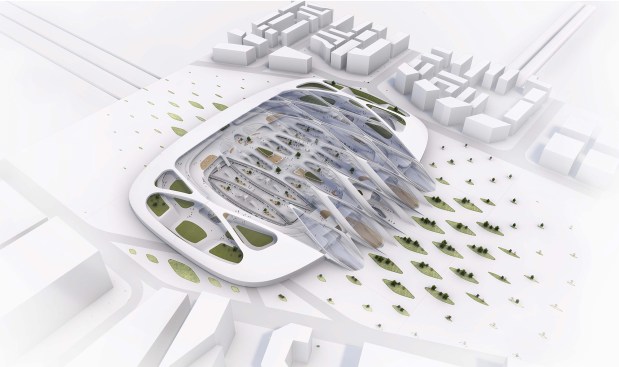
Courtesy UNStudio
Rendering of a Hyperloop Hub incorporated into existing infrastructure
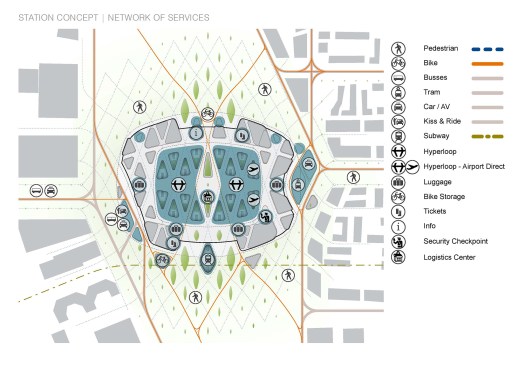
Courtesy UNStudio
Detailed breakdown of the network of services organized in a Hyperloop Hub
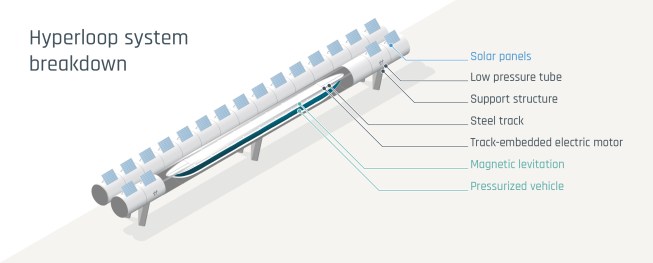
Courtesy UNStudio
